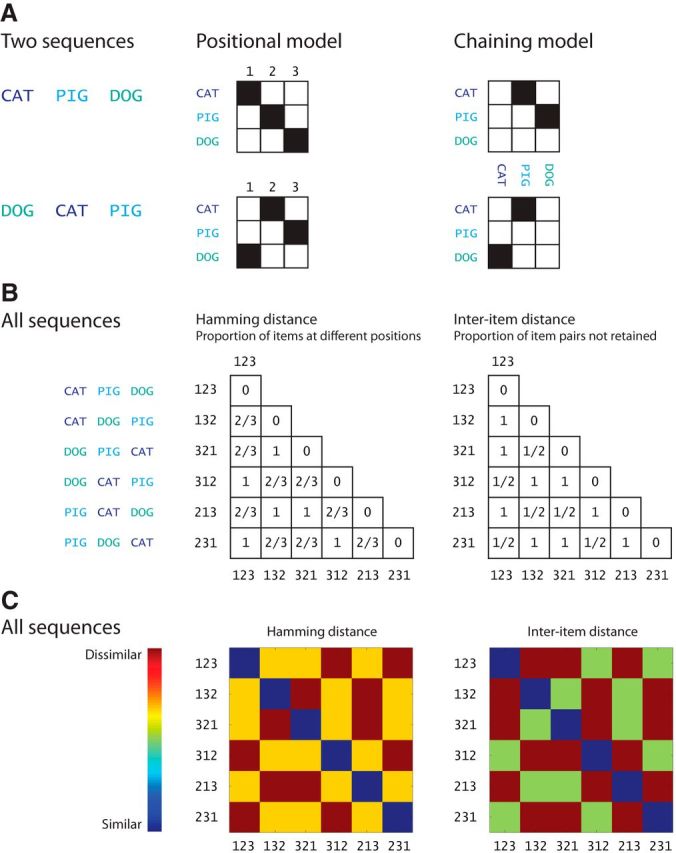Figure 1.

Positional and chaining models of order representation. A, An example how the sequences CAT PIG DOG and DOG CAT PIG are differentially encoded by the positional and chaining models. Numbers refer to the positions of the items (CAT, PIG, DOG) in the sequence. Items are color-coded to highlight the permutations. B, Difference in order encoding yields different pairwise similarity matrices for all possible permutations of the items CAT, PIG, and DOG. We assume that the pairwise similarity between two sequences according to a positional model is given by the Hamming distance between the sequences (see Materials and Methods for details). For the chaining model, pairwise similarity between two sequences can be described by the interitem distance between the sequences. The permutations of the items are number-coded on the axes; e.g., 123 refers to CAT PIG DOG, etc. C, Color-coded similarity matrices.
